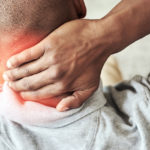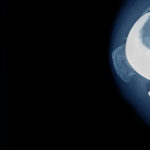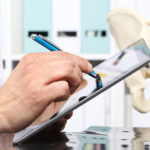November 10, 2018
Osteoporosis is a bone disease that affects roughly 10 million Americans. This disease is characterized by low bone mass, porous bone, and deterioration of the bones. It’s often caused by physical inactivity, hormonal imbalance, and certain medications. Taking steps now to reduce your risk for osteoporosis can help you stay healthy, strong, and active as you continue to age.
Here are 5 effective ways to reduce your osteoporosis risk.
1. Know the Risk Factors
Osteoporosis comes with both preventable and non-modifiable risk factors. Knowing these risk factors can empower you to take the necessary steps to avoid this debilitating bone loss disease. Non-modifiable risk factors for osteoporosis include gender, age, family history, body size, and ethnicity. Osteoporosis tends to be more prevalent among females, older adults, those of Asian or white ethnicity, those who have small, thin body types, and anyone with a family history of the disease.
2. Do Weight-Bearing Exercises
Muscle-strengthening and weight-bearing exercises can improve your posture, balance, agility, and strength — all of which help increase bone density and prevent falls. Exercises that can help prevent osteoporosis include walking, running, dancing, hiking, weight training, tennis, and climbing stairs. If you feel that exercising may increase your risk for falls and fractures, ask your doctor to recommend exercise programs based on your individual risk.
3. Take Calcium and Vitamin D Supplements
A calcium-rich diet can help you build and maintain bone mass, but many Americans lack an adequate amount of calcium in their diets. Good sources of calcium include yogurt, cheese, low-fat milk, and calcium-fortified foods such as cereal, bread, and orange juice. If you’re still not getting enough calcium in your diet, talk to your doctor about supplementation. Adults between the ages of 19 and 70 need 1,000 mg of calcium per day, while females over the age of 51 and adults over 70 need 1,200 mg of calcium per day.
Vitamin D is also needed to help your body properly absorb calcium. Expose your skin to natural sunlight for about 20 minutes per day on most days of the week to induce your body’s vitamin D production. If you’re unable to spend time outdoors in the sun, start taking vitamin D supplements along with calcium. Adults need 600 IU of vitamin D per day, while older adults over the age of 70 need 800 IU of vitamin D daily.
4. Stop Smoking
Smoking has been linked to decreased bone density and also an increased risk for fractures. Quitting smoking is shown to greatly reduce the risk for osteoporosis — even in older adults who have smoked for most of their lives. If you are struggling with quitting, ask your doctor about smoking cessation products and programs that can help you kick your habit for good and stave off bone loss.
5. Reduce Your Alcohol Intake
Heavy drinking can interfere with your body’s production of vitamin D and the way it uses calcium — increasing the risk of bone loss and fractures. Also, alcohol increases the body’s production of the stress hormone cortisol and reduces the production of testosterone and estrogen that can lead to osteoporosis. People who drink heavily also tend to have more falls and fractures, due to the way intoxication may cause dizziness and loss of balance and coordination.
Men should limit their alcohol intake to no more than 4 drinks per day or 14 drinks per week. While women should limit their alcohol intake to no more than 3 drinks per day or 7 drinks per week. If you meet other risk factors for osteoporosis, consider avoiding alcohol completely to stay healthy and reduce your overall risk.
Healthcare Associates of Texas can test your bone strength and help you reduce your risk for bone loss and osteoporosis. Request an appointment today or call (972) 258-7499 to get started with the latest treatments to improve your osteoporosis and achieve optimal health.
References:
https://medlineplus.gov/osteoporosis.html
https://www.ncbi.nlm.nih.gov/pmc/articles/PMC4089021/
https://www.bones.nih.gov/health-info/bone/osteoporosis/osteoporosis-ff
https://www.nia.nih.gov/health/osteoporosis
https://www.ncbi.nlm.nih.gov/pmc/articles/PMC3356951/
https://www.bones.nih.gov/health-info/bone/osteoporosis/conditions-behaviors/bone-smoking
https://www.bones.nih.gov/health-info/bone/osteoporosis/conditions-behaviors/alcoholism
DISCLAIMER
The information featured in this site is general in nature. The site provides health information designed to complement your personal health management. It does not provide medical advice or health services and is not meant to replace professional advice or imply coverage of specific clinical services or products. The inclusion of links to other web sites does not imply any endorsement of the material on such websites.



